Celebrating Six Decades of Vision Leadership
On January 21, 1962, Bascom Palmer Eye Institute, the University of Miami Miller School of Medicine Department of Ophthalmology, officially opened its doors as the first center in the Southeast United States devoted exclusively to the study and treatment of the eye. From its humble beginning with two faculty members, Bascom Palmer has grown steadily for over six decades, becoming a global leader in vision research, education, and clinical care.
“I am proud of our team’s unwavering dedication to advancing eye health and their passion for innovation in patient care, research, and education,” said Eduardo C. Alfonso, M.D., director and the Kathleen and Stanley J. Glaser Chair in Ophthalmology. “Together, we continue to shape the future of ophthalmology and improve lives around the world.”
Leading the way
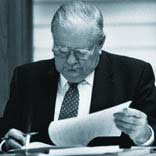
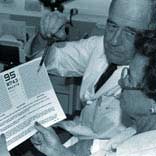
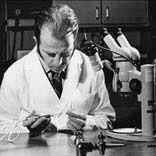
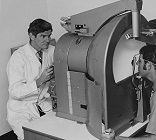
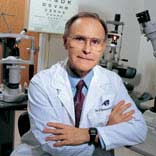
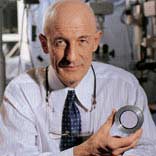
Bascom Palmer’s far-sighted professionals are now developing advanced digital applications like machine learning and artificial intelligence to improve clinical care, while scientists in Bascom Palmer’s laboratories work on gene therapy, stem cells, and biomechanical devices in leading-edge scientific programs.
Setting a high standard
Whether treating patients with eye emergencies, opening conveniently located satellite facilities, or overcoming the challenges of COVID-19, Bascom Palmer’s professionals continue to set a high standard for clinical care for South Florida’s diverse population, while also serving patients from elsewhere in the U.S., the Caribbean, Latin America and beyond.

“Our goal is to deliver the best possible vision care to patients throughout our diverse South Florida community and around the world,” said Dr. Alfonso. To do so, Bascom Palmer has deployed telehealth services and hybrid visits that allow patients to receive convenient vision evaluations, consultations and follow-up care at home. In addition, the institute’s Global Center for Ophthalmic Education offers online programs for vision professionals and students throughout the world, including virtual Grand Rounds and numerous continuing medical education courses.
Moving into the future
Today, Bascom Palmer’s professionals remain focused on finding new ways to diagnose, treat, and prevent vision diseases and disorders. “Our scientists and clinicians are using large-scale clinical databases, 3D imaging technologies, and sophisticated medical therapies to benefit our patients,” said Dr. Alfonso. “Every day, our researchers collaborate with our colleagues at the Miller School of Medicine, sharing ideas and insights, and launching new laboratory and clinical research initiatives.”Reflecting on the leadership of Bascom Palmer’s founding director, Dr. Alfonso said, “Our professional team – as well as our alumni around the world – are proud to continue Dr. Norton’s legacy of providing compassionate patient care and investing in world-class scientific discovery and clinical innovation.”